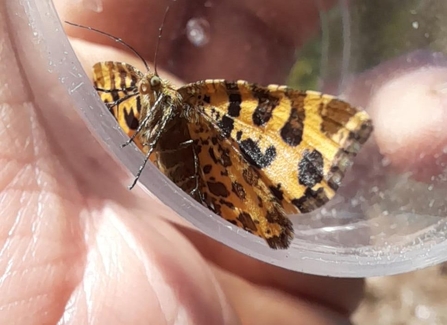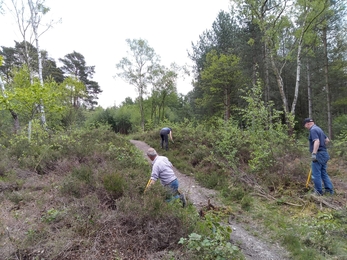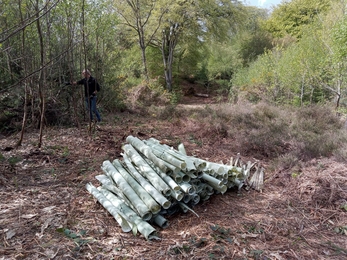Volunteer task days on the Sevenoaks Greensand Commons are varied and interesting; with a common theme of seemingly tireless hard graft from a great bunch of people who are dedicated to putting their best effort and energy into helping local nature; restoring lost habitat and biodiversity. The days-out with the group are as fun and interesting as they are massively productive, with a conscientious approach to the work and the appearance of the sites that is very admirable.
Throughout Winter and early Spring, through rain deluges, sleet and snow, the volunteers made consistently great efforts to reclaim space for rare lowland heath habitat to recolonise the Greensand Commons; following years of neglect that had allowed thick scrub, pioneering birch woodland and the dreaded, invasive rhododendron to take-hold of the landscape.
Now that Spring has gained momentum and nature has burst back into life, our task days have focussed more on engaging with the nature of our sites, to better understand and enjoy the intricacies of the places we devote our efforts to.
Towards this, with only 1 month left of our project’s funding, I’m very glad to have supported some of our volunteers on KWT Study Days, including Reptile Ecology and Survey Techniques, and Butterflies of Kent. A small thanks for great efforts.
Through opening-up heathy woodland glades and clearing larger areas for open heathland, we’ve created plenty of log piles and dead-hedge habitat features. We’re now placing reptile survey refugia (corrugated roofing tiles that heat up well in the sun) to draw-out any resident reptiles from hiding, to bask and show us who’s sharing our spaces. The volunteers will continue surveying these refugia as the heathland habitat recovers. So far, we reliably find 1 slow worm on many task days and surveys alike, but we’re hoping for more encounters as the refugia bed-in better and the reptiles find them. Any slow worm gets plenty of well-deserved excitement from the group all-the-same, as did finding a slough (shed skin) last week!






